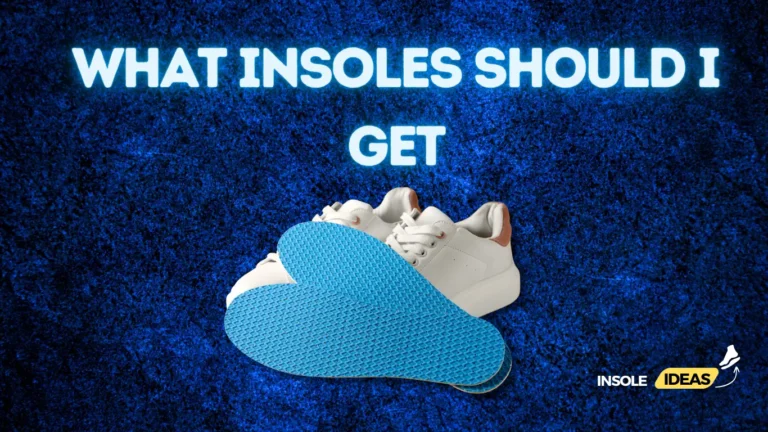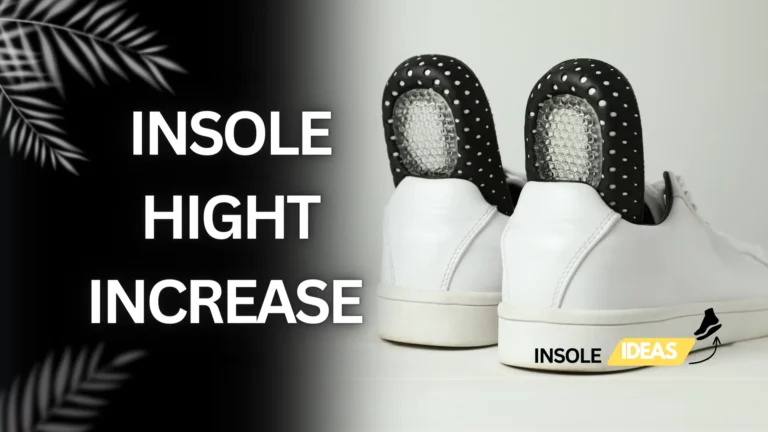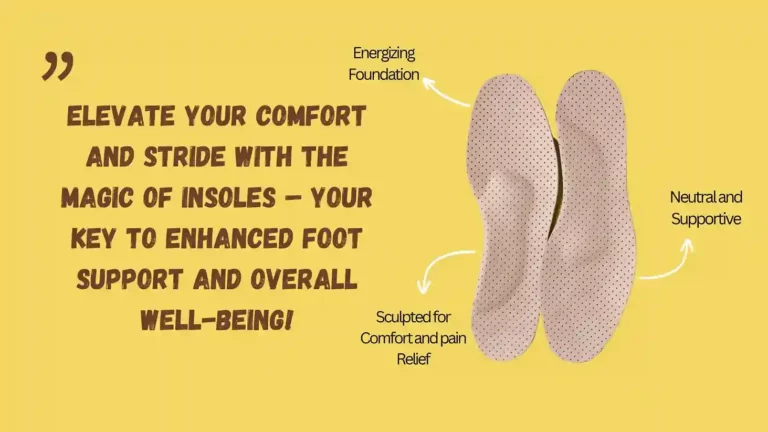A Comprehensive Guide to Understanding Insole Discomfort
Insoles play a crucial role in our daily lives, often acting as unsung heroes beneath our feet. While many recognize their importance, a significant concern lingers: Are insoles supposed to hurt? This introductory section aims to shed light on the vital role insoles play in foot health and the common apprehensions associated with discomfort.
Wearing the right insoles can contribute to overall well-being by providing support and alignment to the feet. These inserts are designed to enhance comfort, alleviate pain, and promote proper posture. However, the misconception that insoles are supposed to hurt can deter individuals from reaping their full benefits.
Brief Overview of the Importance of Insoles
Insoles are not mere accessories; they are foot health allies. They cushion the feet, absorb shock, and distribute pressure evenly, reducing the strain on joints and muscles. Additionally, they contribute to the prevention of various foot conditions, making them an essential component of proactive foot care.
Addressing the Common Concern: Are Insoles Supposed to Hurt?
The discomfort associated with insoles is often a misunderstood aspect of their functionality. Contrary to popular belief, insoles are not meant to cause persistent pain. This section delves into the reasons behind initial discomfort, emphasizing the importance of distinguishing between the natural adjustment period and prolonged agony.
Individuals need to recognize that mild discomfort during the initial days of using insoles is normal as the feet adapt to the new support. However, persistent pain signals potential issues with size, type, or fit, necessitating further investigation.
The Purpose of Insoles
Insoles serve a multifaceted purpose beyond mere cushioning. Understanding their diverse roles is crucial for selecting the right type for specific needs. This section explores how insoles provide support and comfort, address specific foot conditions, and even enhance athletic performance.
Providing Support and Comfort
One of the primary purposes of insoles, especially for those who stand or walk for lengthy periods of time, is to support and soothe the feet. The ergonomic design of insoles helps distribute body weight evenly, reducing pressure points and preventing fatigue.
Addressing Specific Foot Conditions
Insoles aren’t one-size-fits-all; they can be tailored to address specific foot conditions. Whether dealing with plantar fasciitis, flat feet, or high arches, there are insoles designed to provide targeted support and alleviate discomfort associated with these conditions.
Enhancing Athletic Performance
For athletes, the right pair of insoles can make a significant difference in performance. This section explores how insoles designed for athletic activities can offer additional support, shock absorption, and stability, contributing to improved overall performance and reduced risk of injuries.
Types of Insoles
Understanding the variety of insoles available is crucial for making an informed choice. Different types cater to specific needs, and this section explores three major categories: Cushioned insoles, Orthotic insoles, and Support insoles.
Cushioned Insoles
Cushioned insoles focus on providing extra padding and shock absorption. For people looking for more comfort, especially those who spend a lot of time on their feet, they are perfect. These insoles are commonly found in everyday footwear and are designed to alleviate pressure and enhance overall foot cushioning.
Orthotic Insoles
Orthotic insoles are specialized inserts crafted to address specific foot conditions or irregularities. They offer targeted support for issues like overpronation, supination, or arch-related problems. These insoles are often recommended by healthcare professionals to promote proper alignment and alleviate discomfort associated with structural imbalances.
Support Insoles
Support insoles are designed to provide stability and enhance the natural arch of the foot. These are suitable for individuals with conditions like flat feet or those who need additional support during physical activities. Support insoles aim to distribute weight evenly, reducing strain on the feet and lower limbs.
Common Misconceptions about Insoles
Dispelling myths and misconceptions is essential for encouraging the effective use of insoles. This section addresses prevalent misunderstandings surrounding insoles, ensuring readers make informed decisions about their foot health.
All Insoles Are the Same
Contrary to popular belief, not all insoles are created equal. They vary in materials, design, and intended purposes. This subheading emphasizes the importance of selecting insoles tailored to individual needs, debunking the misconception that one-size-fits-all.
Insoles Are Only for People with Foot Problems
Insoles aren’t exclusively for those with existing foot issues. They can be preventive measures, promoting overall foot health and comfort. This subheading highlights the misconception that insoles are solely for remedial purposes, encouraging a broader understanding of their benefits.
Insoles Should Never Cause Discomfort
Addressing a significant concern, this subheading navigates the misconception that insoles should never cause discomfort. It explains the normal adjustment period during which mild discomfort may occur, distinguishing it from persistent pain that signals underlying issues.
Reasons Insoles Might Cause Discomfort
While insoles aim to enhance comfort, there are instances where discomfort may arise. This section explores various reasons, such as incorrect size and fit, adapting to a new support system, and choosing the wrong type of insole.
Incorrect Size and Fit
One common reason for insole discomfort is choosing the wrong size or fit. Ill-fitting insoles can create pressure points, leading to pain and discomfort. This subheading guides readers on selecting the right size and ensuring a snug fit for optimal support and comfort.
Adjusting to a New Support System
When transitioning to a new pair of insoles, an adjustment period is normal. This subheading explains the adaptation process, helping readers manage expectations and understand that initial discomfort is temporary, with long-term benefits awaiting after the acclimatization period.
Choosing the Wrong Type of Insole
Not all insoles suit every individual or activity. Selecting the wrong type can lead to discomfort and inefficacy. This subheading guides readers in identifying their specific needs and choosing the appropriate insole type, preventing unnecessary pain and ensuring optimal support.
Breaking Down the Adjustment Period
Embarking on the journey of using new insoles involves an adjustment period that varies for each individual. This section breaks down the components of this acclimatization process, highlighting the significance of understanding and managing expectations for a positive experience.
Understanding the Acclimatization Process
New insoles introduce changes in foot support and alignment, requiring time for the feet to adapt. This subheading explains the physiological adjustments occurring during this period, such as changes in muscle engagement and foot posture. Understanding these processes helps users navigate the initial discomfort more effectively.
Managing Expectations During the Initial Discomfort Phase
It’s crucial for users to anticipate and manage expectations during the initial discomfort phase. This subheading provides insights into what to expect, emphasizing that mild discomfort is a natural part of the adjustment process. Managing expectations prevents unnecessary concern, allowing users to focus on the long-term benefits of using insoles.
Gradual Adaptation for Long-Term Benefits
The discomfort experienced during the initial days of wearing insoles is a temporary phase with lasting advantages. This subheading underscores the importance of gradual adaptation, highlighting that consistent use will lead to improved comfort, reduced pain, and enhanced foot health. Users are encouraged to persevere through the adjustment period for the long-term benefits in store.
Proper Selection of Insoles
Selecting the right insoles is pivotal for ensuring maximum comfort and support. This section provides guidance on matching insole types to specific foot conditions, seeking professional advice, and the importance of trying before buying.
Matching Insole Type to Foot Condition
Different foot conditions require specific types of insoles for optimal support. This subheading educates readers on the importance of identifying their foot condition and choosing corresponding insoles. Whether addressing arch issues, plantar fasciitis, or general discomfort, matching the insole type to the foot condition is crucial for effective relief.
Seeking Professional Advice
For personalized guidance, seeking professional advice is invaluable. This subheading emphasizes consulting with podiatrists or footwear specialists who can assess individual needs and recommend suitable insoles. Professional insights ensure that users make informed choices aligned with their foot health requirements.
Importance of Trying Before Buying
Trying on insoles before making a purchase is a practical step in ensuring the right fit. This subheading explores the significance of testing insoles with different footwear to assess comfort and compatibility. Trying before buying minimizes the risk of discomfort and dissatisfaction, leading to a more satisfactory insole experience.
DIY Solutions for Insole Discomfort
In some instances, users may encounter discomfort that can be addressed with do-it-yourself (DIY) solutions. This section explores making minor adjustments to insoles, choosing suitable footwear for insole compatibility, and incorporating foot exercises for added relief.
Making Minor Adjustments to Insoles
This subheading provides tips on minor adjustments users can make to their insoles for a better fit. Whether it’s adding extra padding or modifying the insole shape, these DIY solutions empower users to customize their insole experience to maximize comfort and support.
Choosing Suitable Footwear for Insole Compatibility
Footwear plays a crucial role in the effectiveness of insoles. This subheading guides readers on selecting shoes that complement their insoles, ensuring a seamless integration for enhanced comfort and support. The right combination of insoles and footwear contributes to a positive overall experience.
Incorporating Foot Exercises for Added Relief
To complement insole usage, incorporating foot exercises can provide added relief. This subheading introduces simple exercises that strengthen muscles, improve flexibility, and enhance overall foot health. Users are encouraged to integrate these exercises into their routine for comprehensive well-being.
Conclusion
Summing up the wealth of information provided, this conclusion section highlights key takeaways, encourages readers to explore insole options, and emphasizes the long-term benefits of finding the right fit.
Summarizing Key Takeaways
This subheading distills the essential learnings from the article, covering topics like the adjustment period, selecting the right insoles, seeking professional help, and balancing style with comfort. Readers can quickly grasp the core insights for informed decision-making.
Encouraging Readers to Explore Insole Options
Encouragement is offered for readers to explore the diverse world of insole options. This subheading motivates individuals to consider their unique needs, try different types of insoles, and find the ones that best suit their lifestyle and foot health requirements.
Emphasizing the Long-Term Benefits of Finding the Right Fit The final subheading underscores the importance of perseverance in finding the right insole fit. It emphasizes that the initial discomfort is a small investment for the long-term benefits of enhanced comfort, reduced pain, and overall improved foot health. Readers are encouraged to prioritize their well-being by taking the time to discover the insoles that best cater to their individual needs.
FAQs
Insoles may cause initial discomfort due to the adjustment period. This subheading explains that the feet need time to adapt to the new support, and mild discomfort is normal. It also delves into factors such as the type of insole and individual foot sensitivity, offering insights into why some users may experience initial discomfort.
The timeline for insoles to feel comfortable varies. This subheading elaborates on the adaptation process, indicating that while some users experience immediate relief, others may take a few days or weeks. It emphasizes the importance of patience and consistent use for optimal comfort.
Addressing a common concern, this subheading clarifies that insoles, when chosen appropriately, should not exacerbate existing foot conditions. It emphasizes the need for proper selection and, if uncertain, seeking professional advice to ensure insoles align with individual foot health requirements.
This subheading explores the benefits of custom-made insoles, emphasizing their tailored fit and targeted support. It also discusses scenarios where custom-made insoles might be particularly beneficial, helping readers make an informed decision about investing in personalized foot support.



